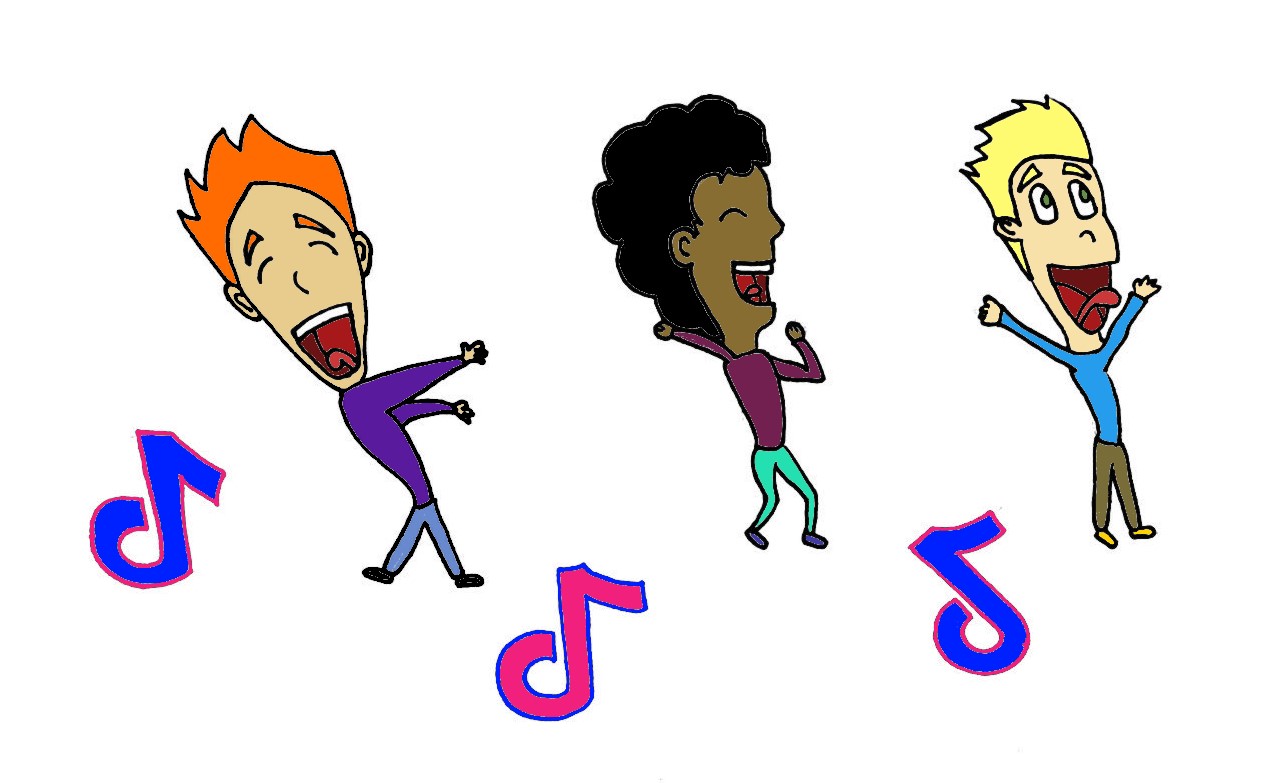
An analysis of the popular trend
By Sonam Kaloti, Arts Editor
According to Collins Dictionary, the arts are “activities such as music, painting, literature, cinema, and dance, which people can take part in for enjoyment, or to create works which express serious meanings or ideas of beauty.” So, we can logically conclude that TikTok dances, like every other form of art, are valid. Boom. However, that doesn’t answer the bigger question hiding just below the surface—do TikTok dances count as a good form of art?
Recording yourself dancing can be tricky because without a cameraman you cannot move around much. Due to this, most TikTok dance videos follow a simple rule: just focus on moving your upper body. Footwork is an integral part of all dance, even for dance that is focused more on arms alone (such as waacking). Though, moving just your upper body still counts as a sequence of steps; being restricted to the upper body doesn’t discredit the dance completely. But it could be said that it is easier to dance this way, just as it is easier to only learn the left hand’s part for a piano piece.
Because TikTok dances are such a popular trend, most people partake in it for fun—not because they are trained in dance. If they had taken any dance classes (at all) I’m certain we’d see a lot more expression on our TikTok feeds rather than the common deadpan look that stares straight into the camera. Alas, we are doomed to face this face. Pro-tip for the TikTokers out there: please smile… or frown… or anything.
Moreover, TikTok dancing is far more casual and focused on being viral. This means that you’ll typically see dancers “Hitting The Woah,” doing the “Milly Rock,” and “dabbing.” You’d likely never see this type of dancing in a professional environment, which calls question to the authenticity of the dances. Perhaps this simplicity is why the videos are referred to by the term “TikTok dances” rather than dancing on TikTok.
If TikTok dances are worth less than regular dancing, the drama behind their popularity would beg to differ. Take the famous “Renegade” dance, for example. It has taken the internet world by storm and was originally created by 14-year-old Jalaiah Harmon. It rose to fame fast after TikToker and “Hype House” member Charli D’Amelio posted her version of Harmon’s dance. The dance skyrocketed D’Amelio’s fame, initially leaving Harmon with virtually zero recognition because D’Amelio did not give credit to the original creator. This eventually sparked outrage, leading to a TikTok collab video between the two, Harmon doing her dance at an NBA All-Star game, and Harmon dancing on Ellen. Harmon was awarded her rightful recognition as the original creator, but harm had already been done.
Climbing the fame ladder is just as ruthless on TikTok as anywhere else, clearly. Nonetheless, most people dance because it makes them happy. Watching their friends have fun also sparks joy, and keeping connected with loved ones through this fun expressive way is great during current social distancing.
So, are TikTok dances real art? Yes. Are TikTok dances good art? That’s subjective, but there’s no denying that TikTok dances lose the essence of any other genre of dance due to their lack of movement, expression, and emotional truth. TikTok dances do not feel authentic as an art form, but the human connection it serves to boost right now atones for its sins.
